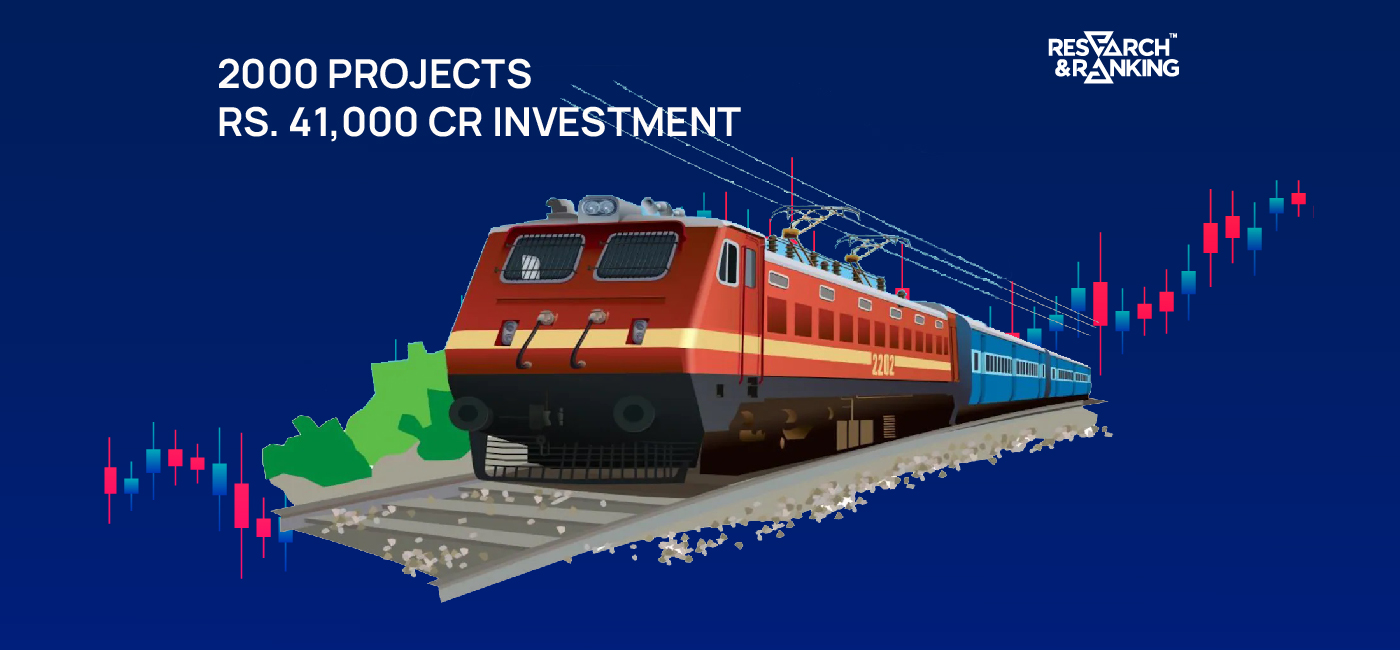Imagine stepping off a train at a modern station with amenities like shopping, dining, and improved accessibility. Sounds convenient, right? Well, that vision is inching closer to reality thanks to a significant announcement by Prime Minister Narendra Modi.
On Monday, PM Modi unveiled a significant initiative: the launch of over 2,000 railway infrastructure projects worth a staggering ₹41,000 crore. This ambitious plan promises to revolutionize the Indian railway system, impacting commuters and industries. Let’s delve deeper and explore the potential implications of this announcement.
Transforming the Railway Experience
The centerpiece of this initiative is the “Amrit Bharat Station Scheme,” aiming to revamp 553 railway stations across the country. This means many stations will undergo a facelift, offering enhanced passenger amenities like improved waiting areas, better lighting, and modern facilities.
There will be shopping options, food courts, and even dedicated spaces for children to create a more comfortable and convenient travel experience.
Additionally, the construction of 1,500 Road Over Bridges (ROBs) and Under Bridges (RUBs) will address a significant pain point – level crossings. These bridges will improve safety, reduce traffic congestion, and expedite train movement, leading to potentially shorter travel times.
Boost for the Railways and Infrastructure Industries
This large-scale project is expected to trigger a ripple effect across various industries. The construction of stations, bridges, and other infrastructure will require significant manpower and resources, creating numerous job opportunities in the construction and engineering sectors.
Furthermore, the project requires the involvement of various industries like steel, cement, and electrical equipment manufacturers. This increased demand may spur growth and investment in these sectors, contributing to economic development.
Which Sectors Will Benefit?
While the specific details of the projects haven’t been released yet, some sectors are widely expected to benefit from this significant investment. A portion of the allocated funds could be directed towards railway projects such as:
- Network expansion: Building new lines, doubling existing tracks, and developing dedicated freight corridors.
- Modernization: Upgrading existing infrastructure, including electrification, signaling systems, and rolling stock.
- Station improvements: Enhancing passenger amenities and logistics facilities at stations.
Increased infrastructure spending would lead to a rise in demand for railway equipment and services:
- Rolling stock manufacturers: Companies that produce locomotives, carriages, and wagons. Bharat Forge Limited (BFT), Titagarh Wagons Limited (TWL), and Siemens India Limited (SIEMENS) could see increased demand for their products.
- Construction companies: Firms involved in building new tracks, stations, and other infrastructure. Players like Larsen & Toubro Limited (LT), NCC Limited (NCC), and Afcons Infrastructure Limited (AFCONS) might be involved in building new railway infrastructure.
- Engineering and consultancy firms: Businesses providing design, planning, and project management services for railway projects. Companies like Rail Vikas Nigam Limited (RVNL) and WAPCOS Limited (WAPCOS) could potentially secure contracts for railway project design and planning.
Then there are other sectors like:
Infrastructure: This sector will likely see a major boost, with projects like transportation, power, and communication receiving a significant portion of the funds. Companies that could benefit: Larsen & Turbo, NTPC, TataPower, PowerGrid BhartiAirtel
Construction: The increased infrastructure spending will likely lead to a surge in demand for construction materials and services, benefiting companies in this sector. Companies that could benefit: UltraCemco, ACC, Grasim, ShreeCem
Manufacturing: As infrastructure improves and transportation costs decrease, manufacturing activity could boost, particularly in sectors like automobiles and building materials. Companies that could benefit: TataMotors, Mahindra & Mahindra, Bajaj-Auto
Beyond the Numbers:
While the numbers associated with this project are impressive, the potential impact goes beyond mere statistics. Improved infrastructure can lead to increased connectivity, not just within cities but also between different regions. This, in turn, can facilitate trade, tourism, and overall economic activity.
Challenges and Considerations
Despite the promising outlook, it’s crucial to acknowledge potential challenges. Ensuring the timely completion of such a vast number of projects and maintaining quality standards throughout the process will be crucial. Additionally, addressing potential concerns regarding land acquisition and environmental impact will be essential during project execution.
A Look Ahead
Prime Minister Modi’s announcement signals a significant step towards modernizing India’s railway network. While the full impact will unfold over time, the project holds the potential to transform the travel experience, boost the economy, and create new opportunities in various sectors. It’s a testament to India’s commitment to infrastructural development and its vision for a more connected and prosperous future.
*Disclaimer Note: The securities quoted, if any, are for illustration only and are not recommendatory. This article is for education purposes only and shall not be considered as recommendation or investment advice by Research & Ranking. We will not be liable for any losses that may occur. Investment in securities market are subject to market risks. Read all the related documents carefully before investing. Registration granted by SEBI, membership of BASL, and certification from NISM in no way guarantee the performance of the intermediary or provide any assurance of returns to investors.
How useful was this post?
Click on a star to rate it!
Average rating 4.2 / 5. Vote count: 6
No votes so far! Be the first to rate this post.
I’m Archana R. Chettiar, an experienced content creator with
an affinity for writing on personal finance and other financial content. I
love to write on equity investing, retirement, managing money, and more.
-
Archana Chettiarhttps://www.equentis.com/blog/author/archana/
-
Archana Chettiarhttps://www.equentis.com/blog/author/archana/
-
Archana Chettiarhttps://www.equentis.com/blog/author/archana/
-
Archana Chettiarhttps://www.equentis.com/blog/author/archana/

